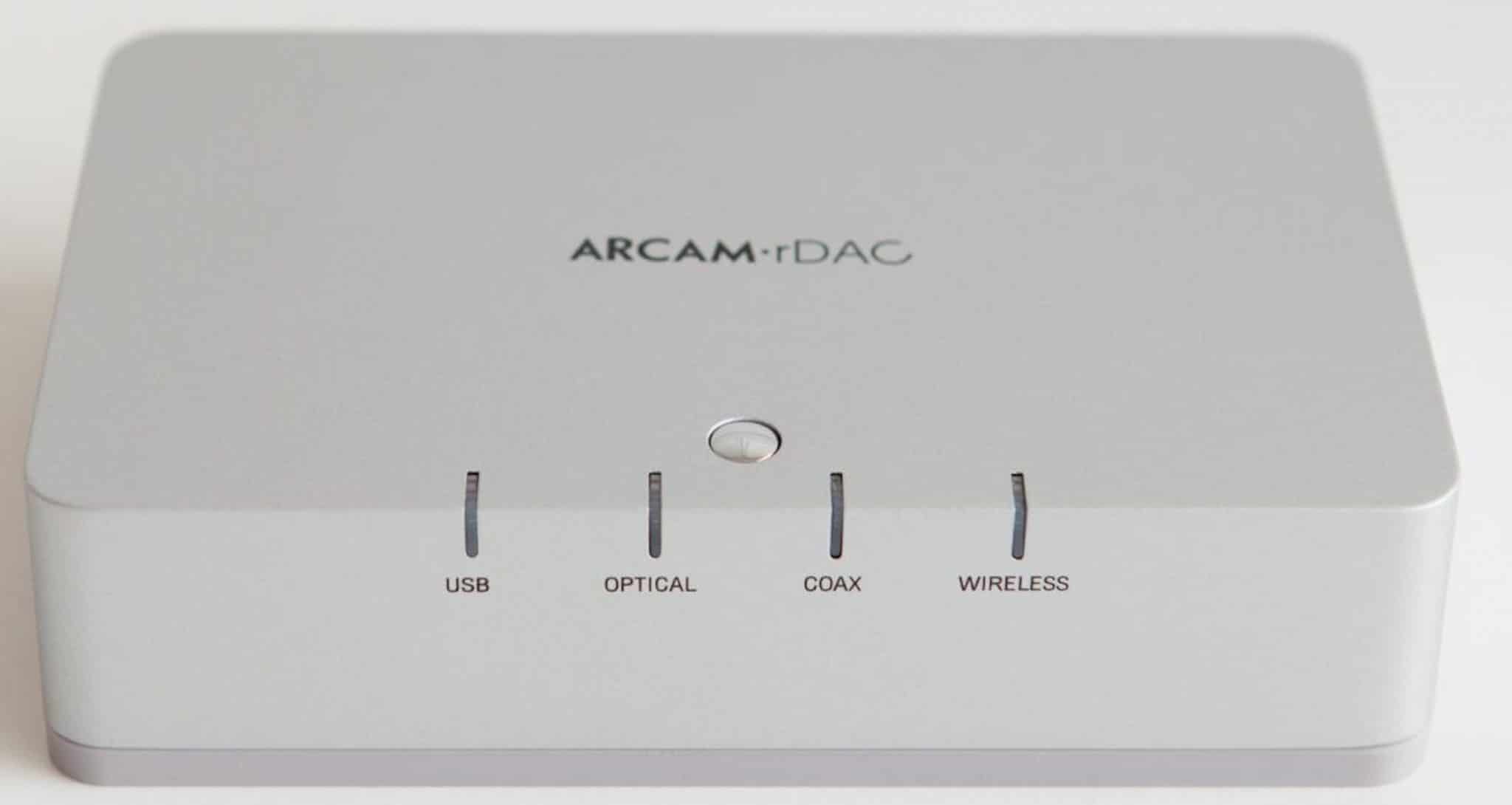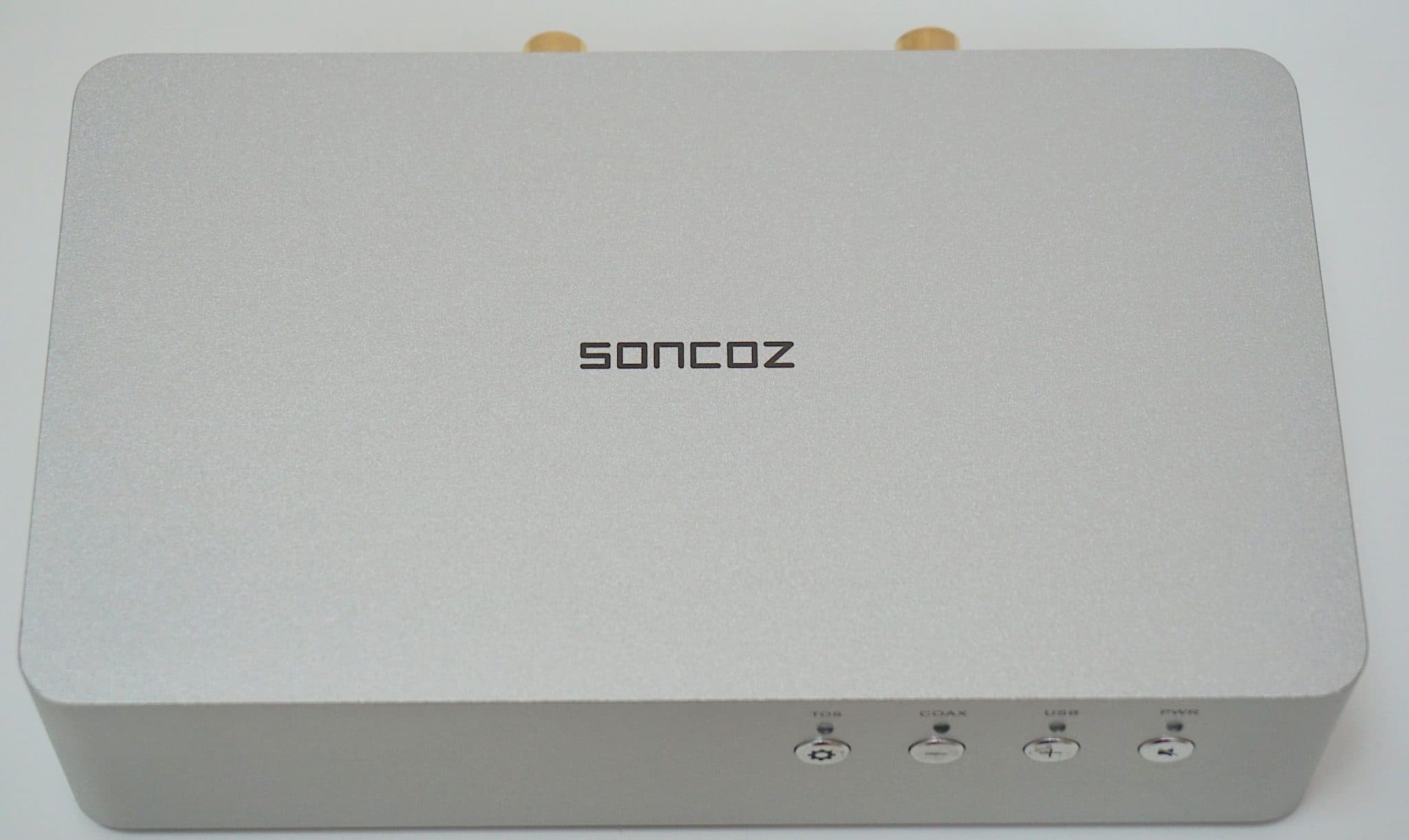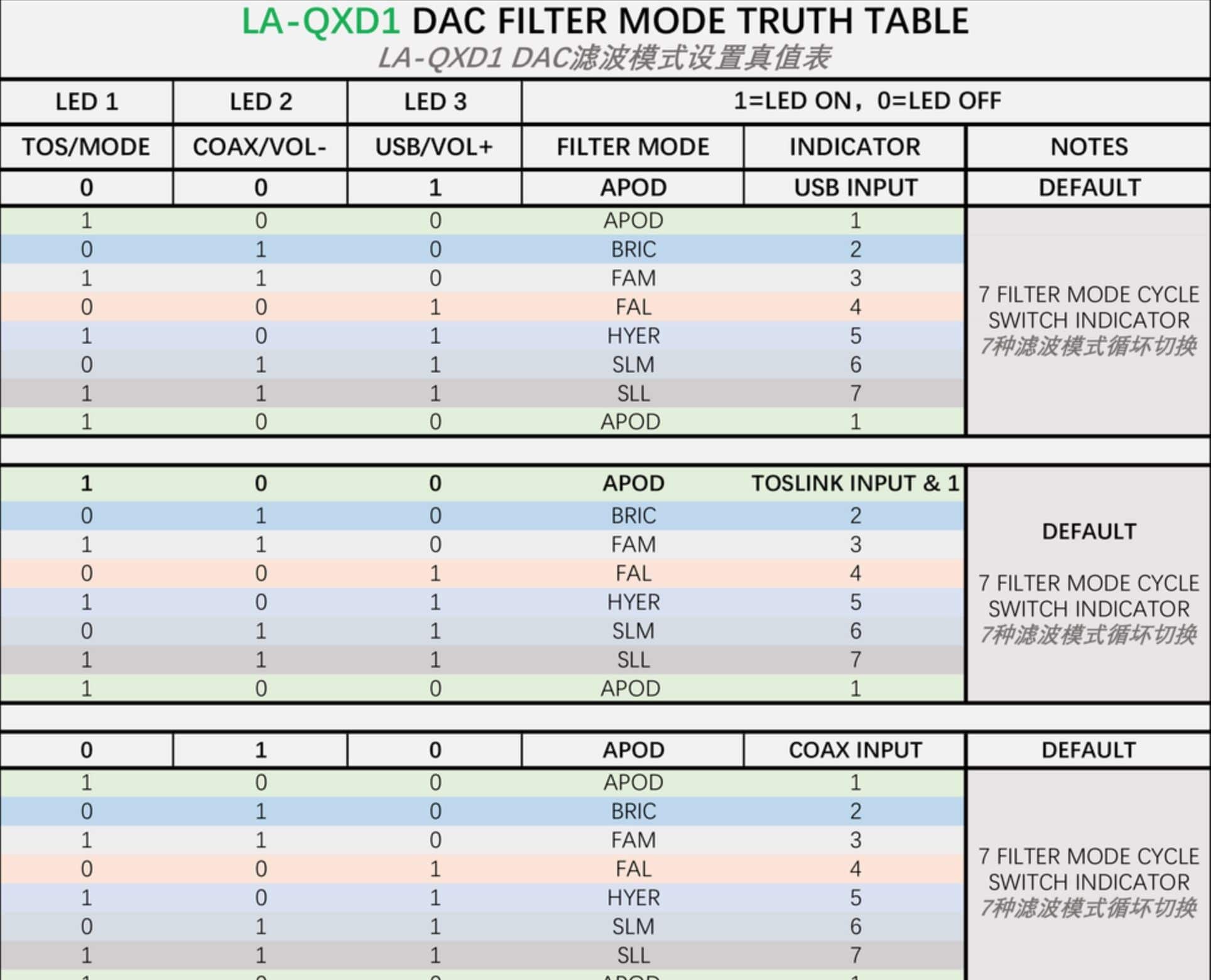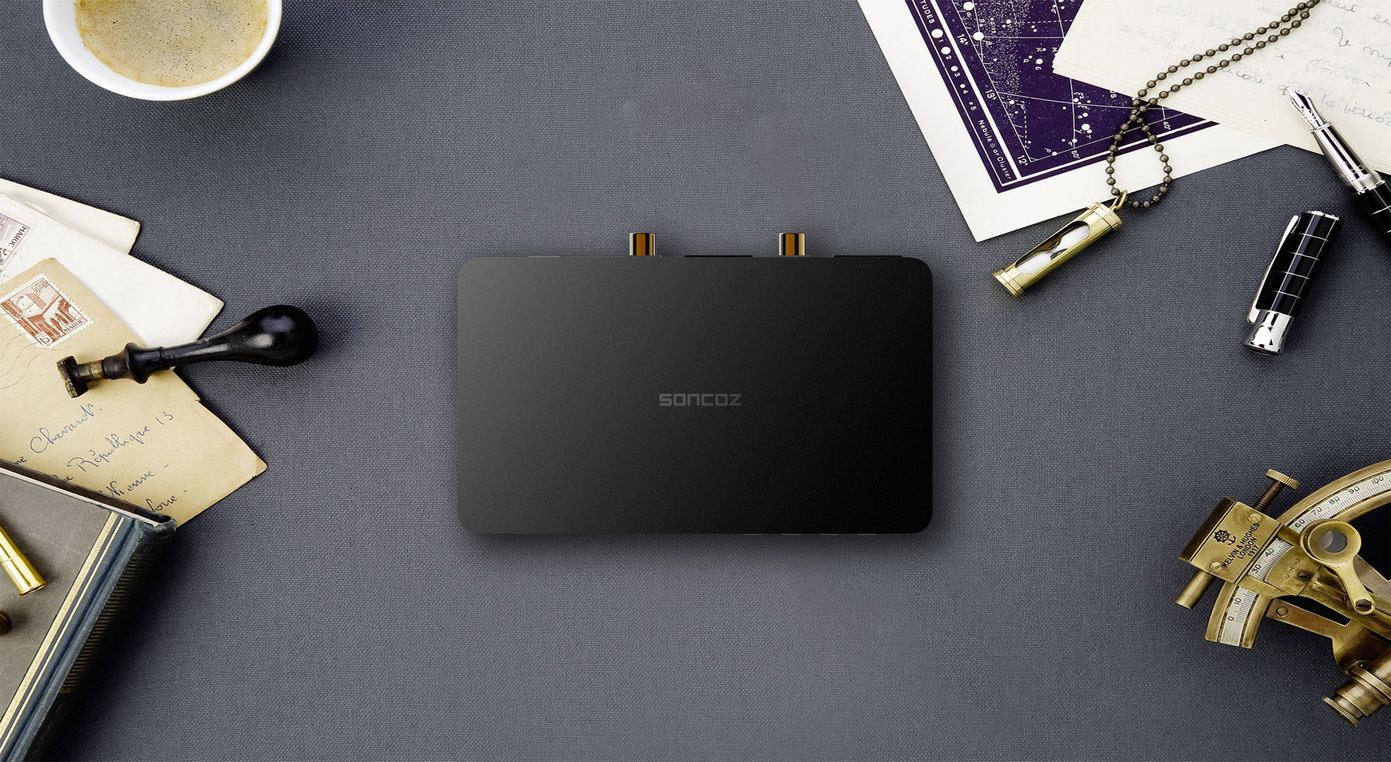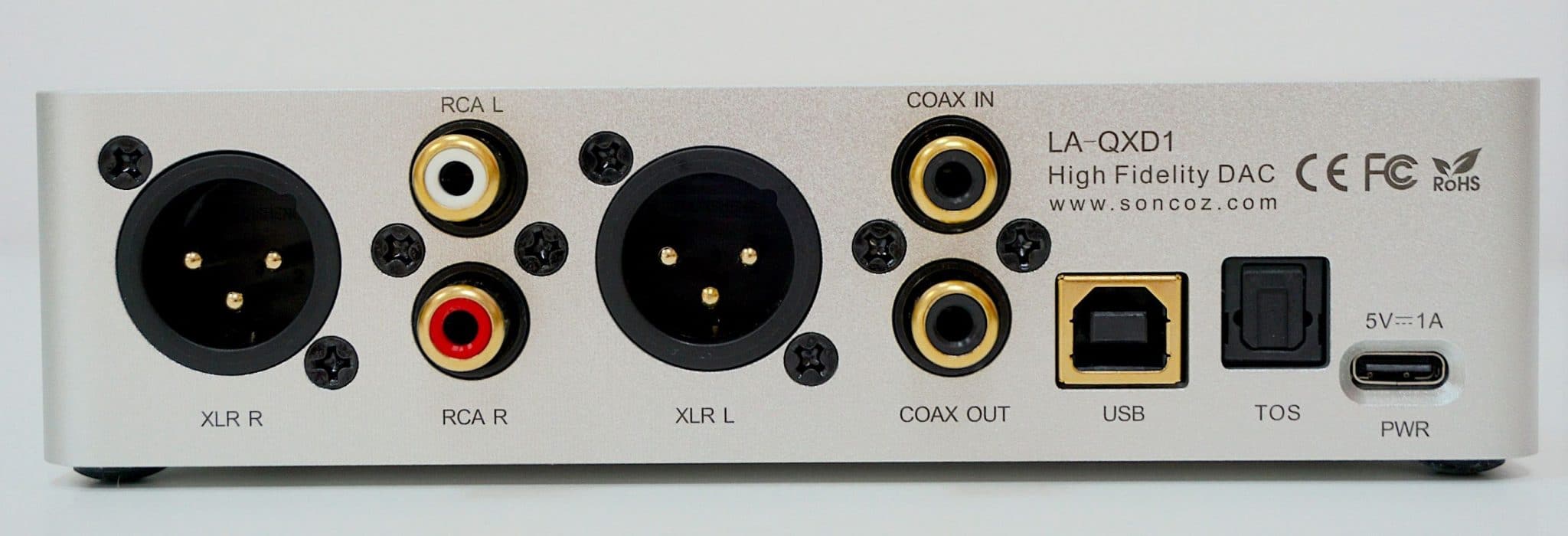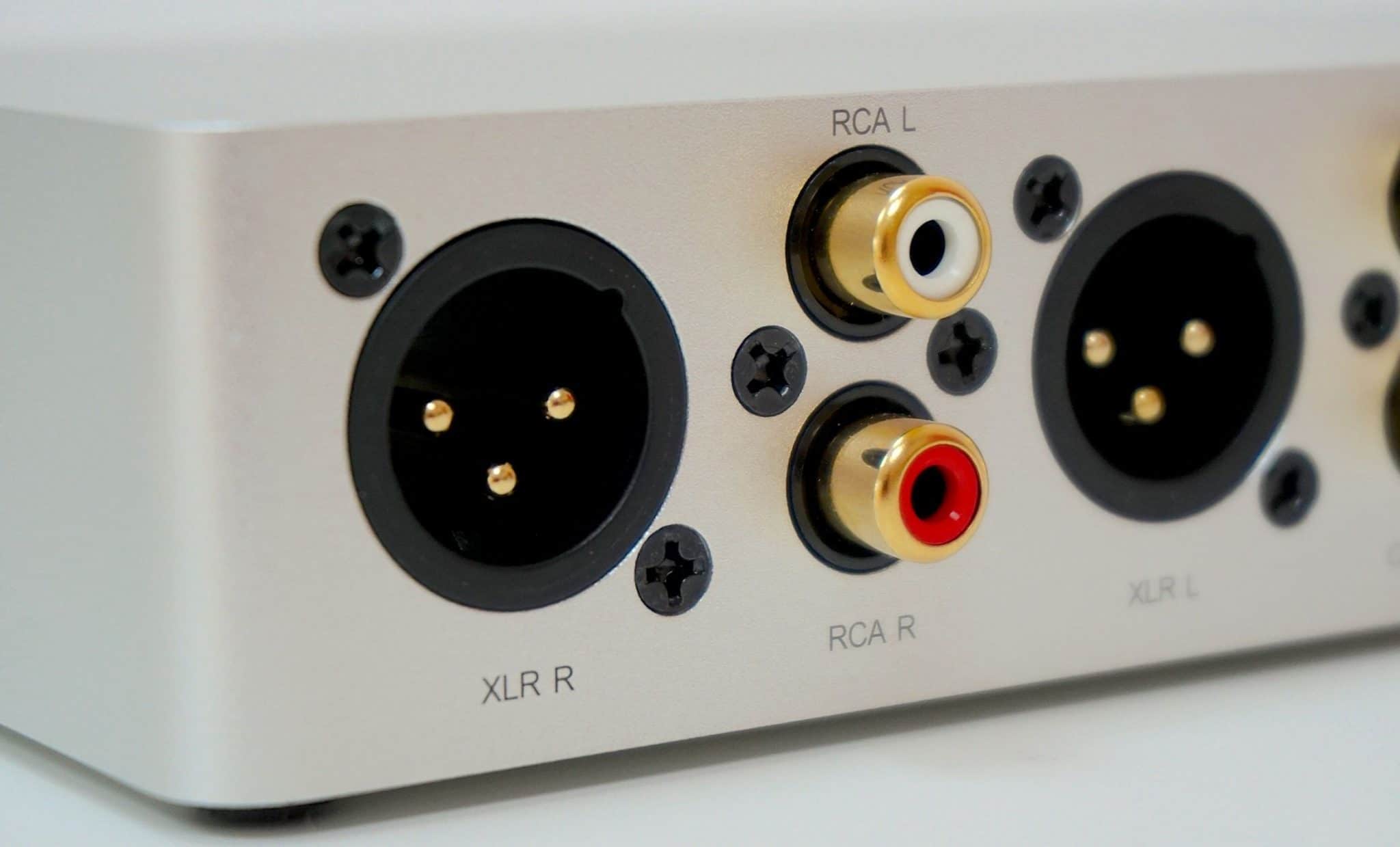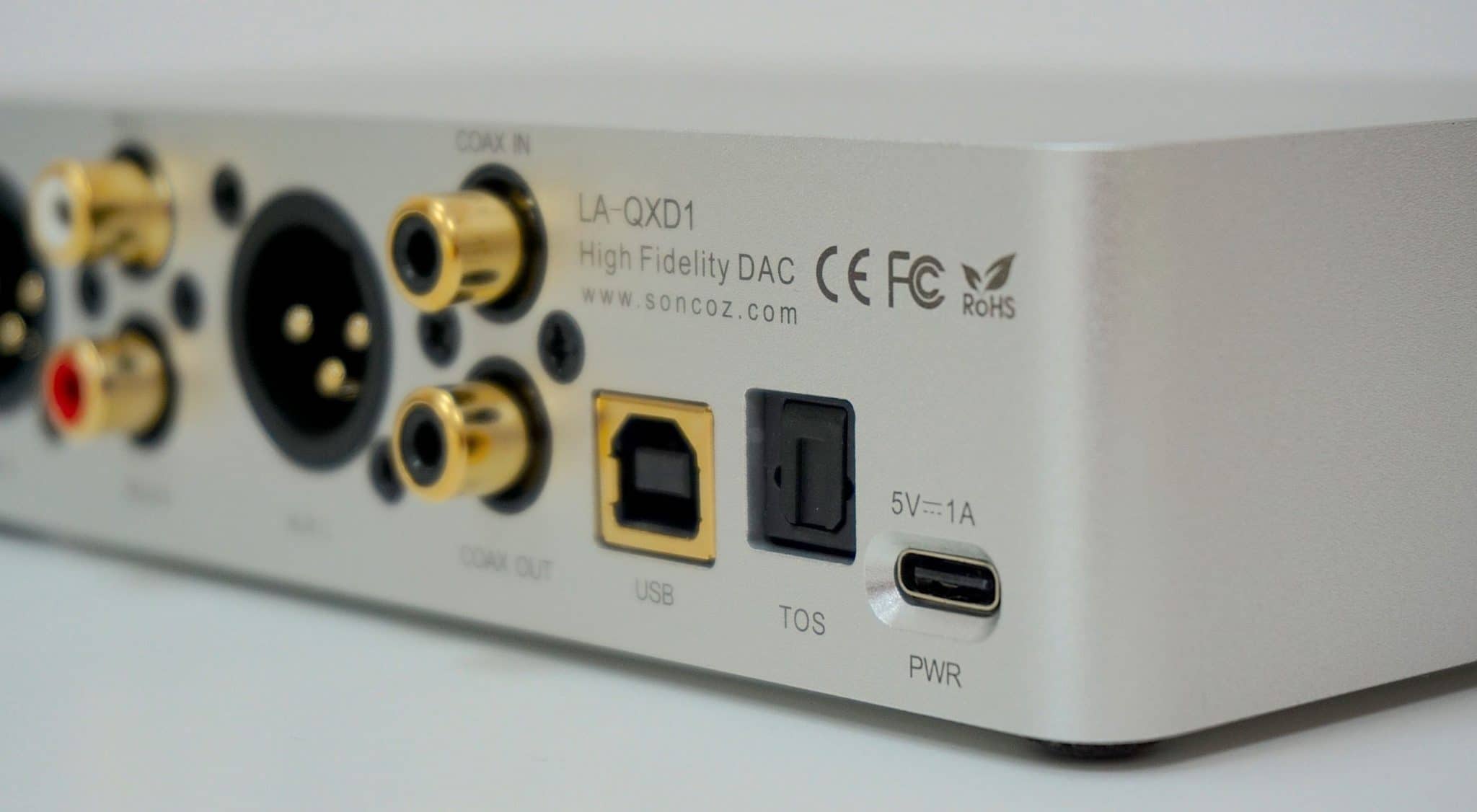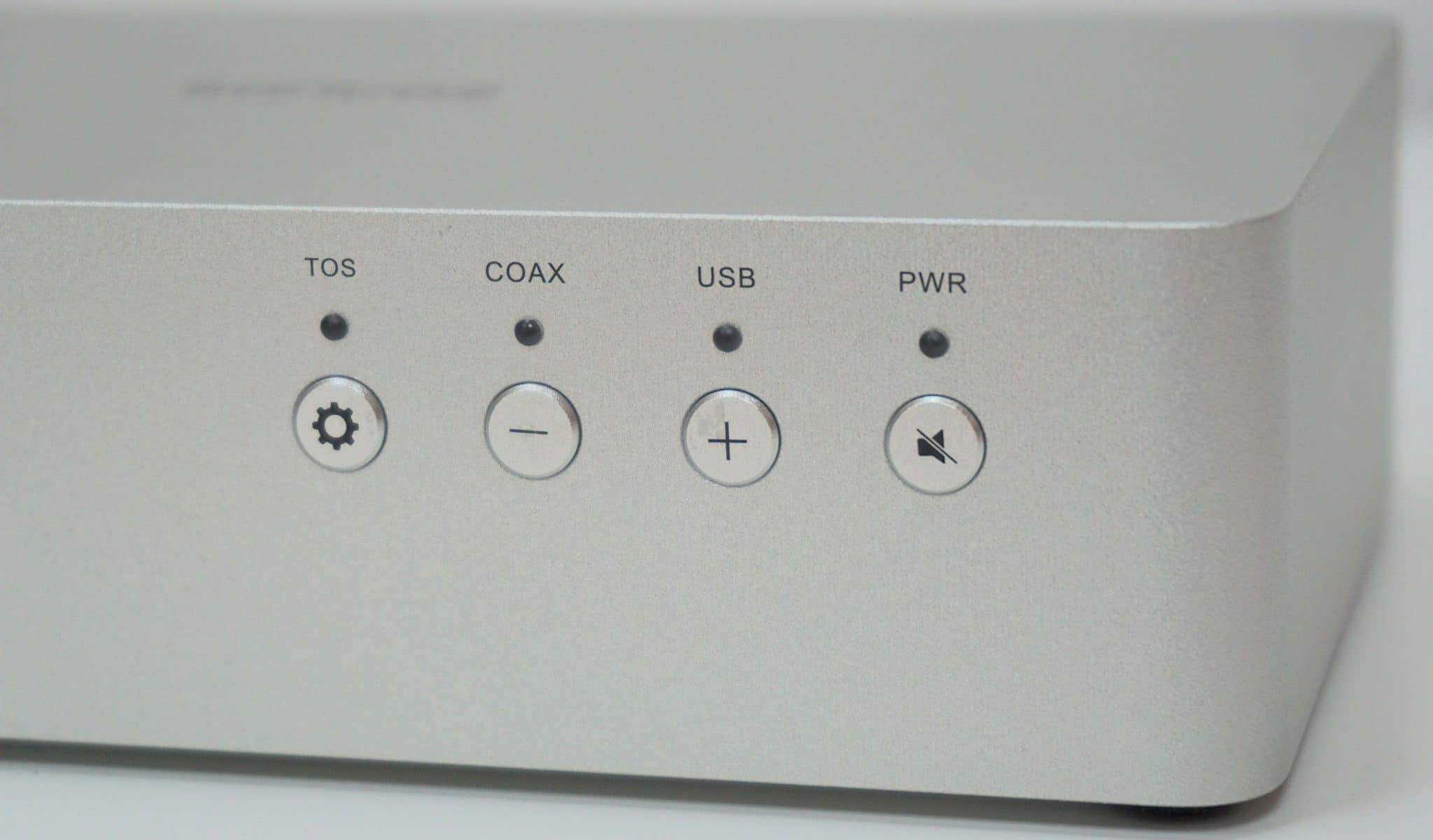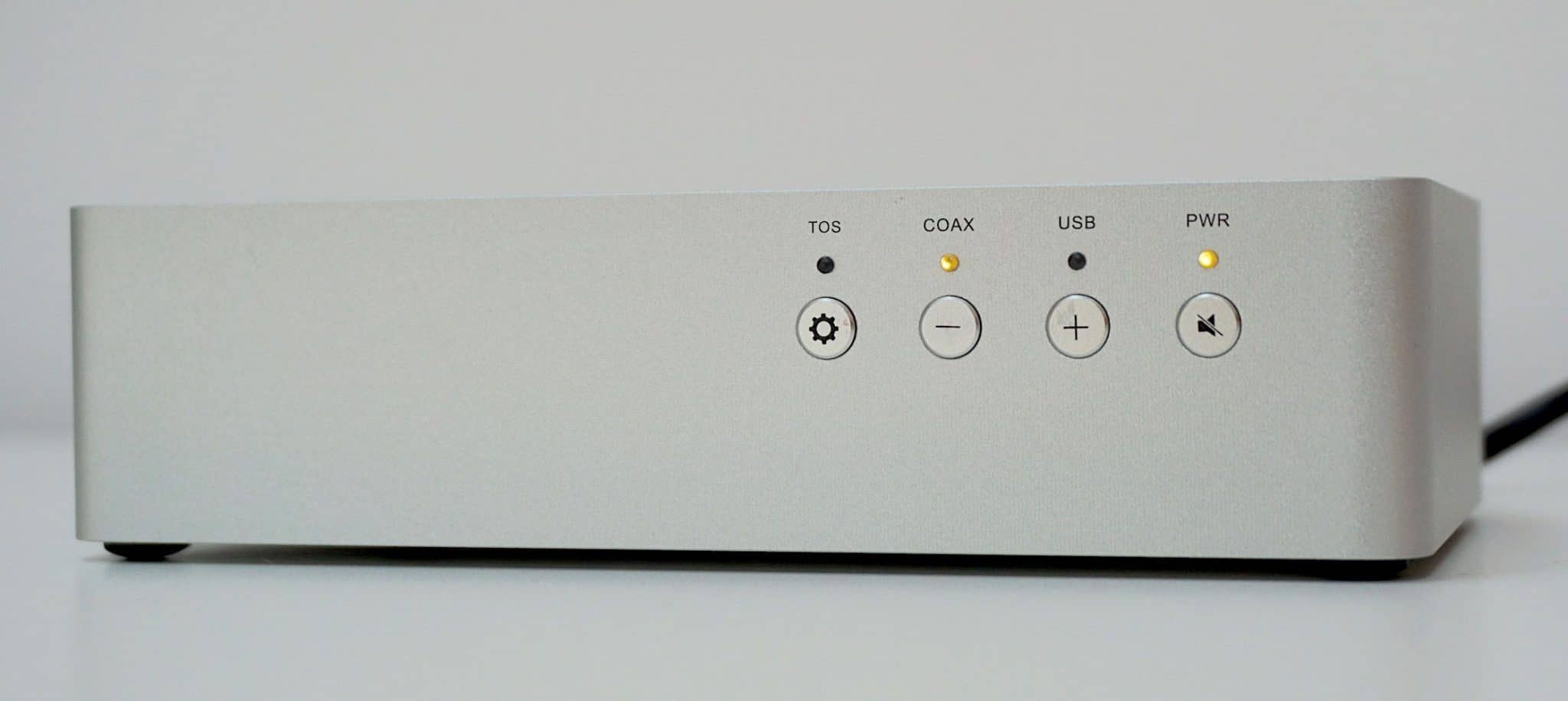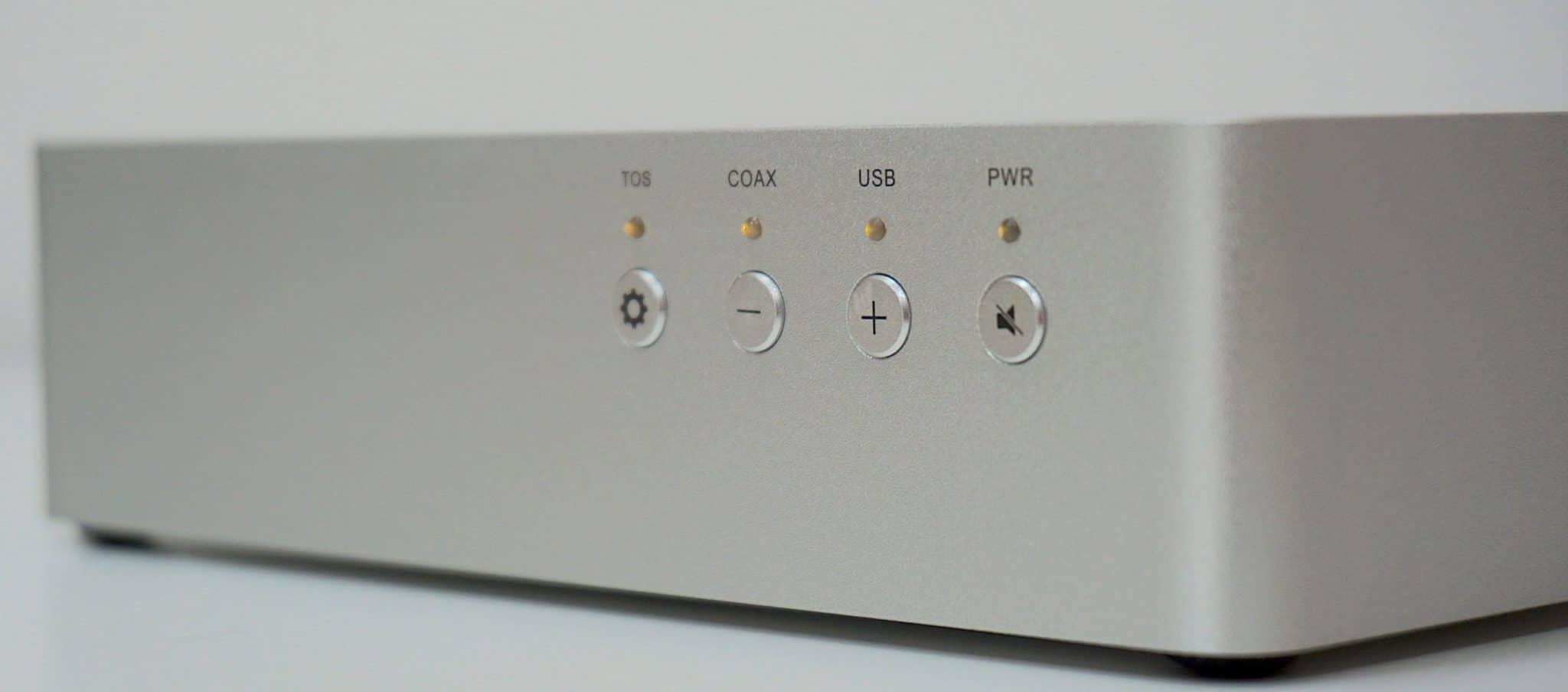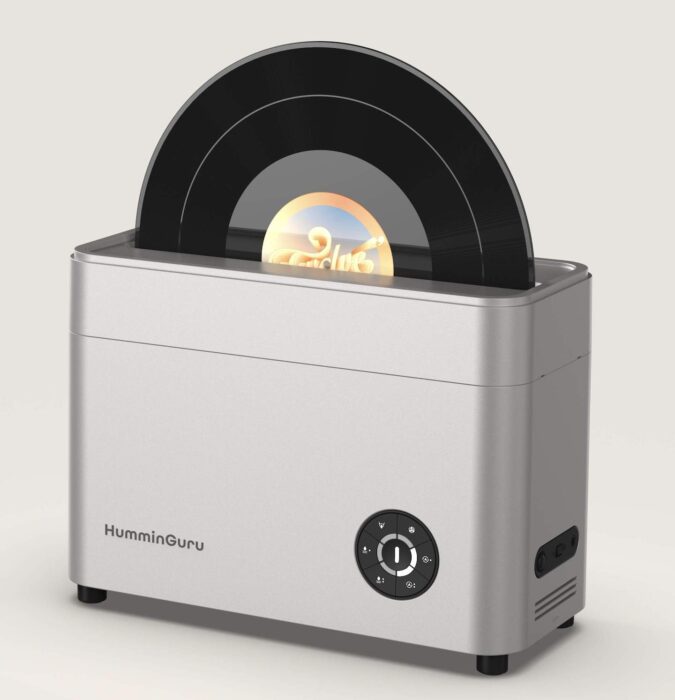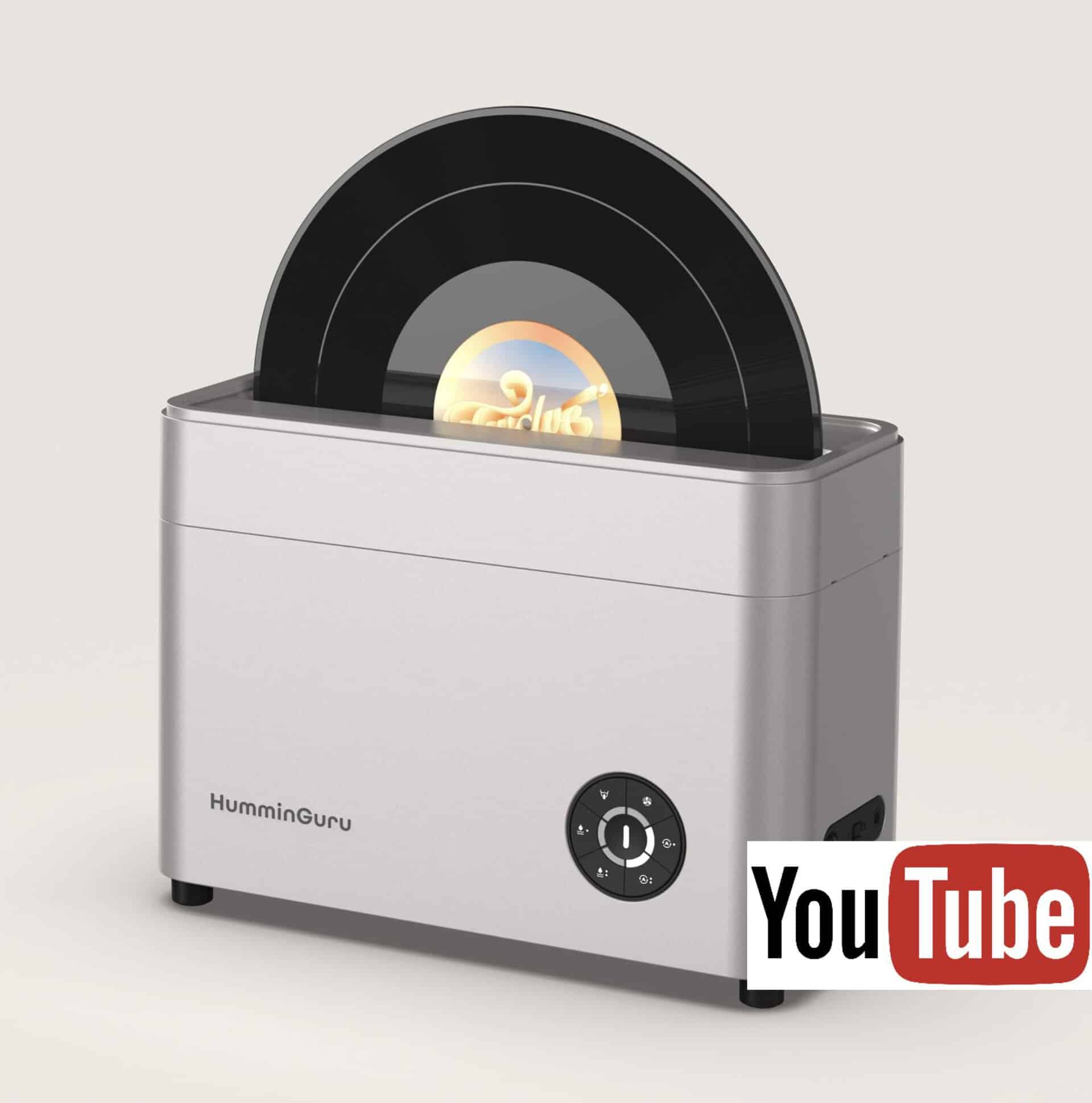The Article
LA-QXD1 DAC From Soncoz
5th August 2020

And they come again. DACs sourced from indigenous Chinese hi-fi outfits are, as my old Gran used to say, “all the rage”. Paul Rigby looks at this new 32bit LA-QXD1 model with single-ended and balanced outputs
This one is intriguing…and was initially oddly familiar.
I took the LA-QXD1 out of its very presentable and rather swish box, a box that Apple would be happy to use and sat there and stared and racked my brains.
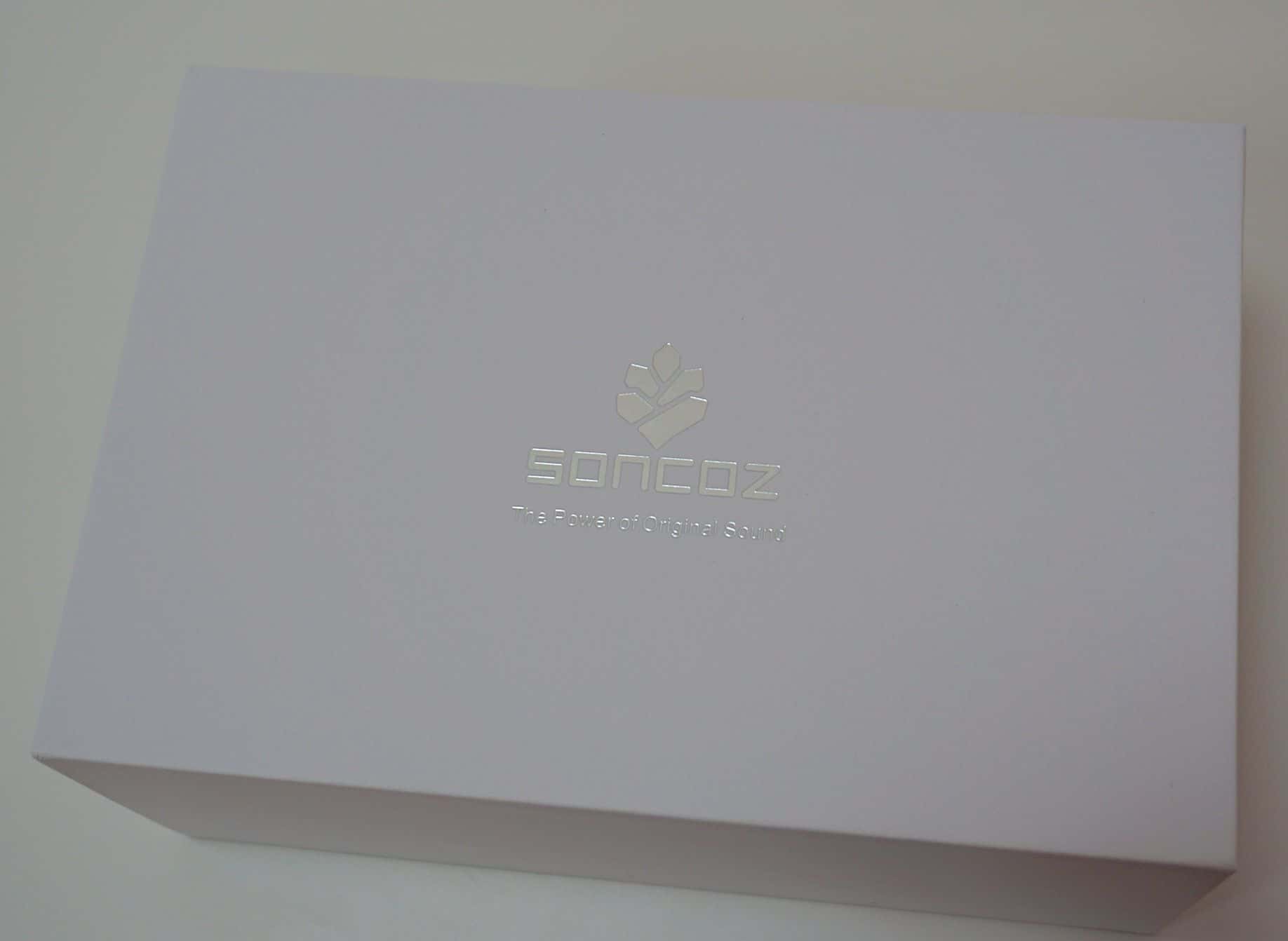
And then I had it. The LA-QXD1 looks like a slightly smaller Arcam rDAC. You may or may not see the similarities in the images here (below) and sure, the inputs/outputs are different in layout and type but, in real life, the two look related in finish and form factor. The LA-QXD1 even has the same rounded corners of the rDAC.
While I’m on the subject of size and finishes, the LA-QXD1 arrives in silver, grey or black, spans 149.3 x 87 x 37mm and weighs in at 500g.
CNC machined from a solid block of aluminium, the USB portion of the DAC supports up to 32bit/768kHz with DSD up to 512. Coax and optical range up to 24bit/192kHz.
While we’re around the back of the LA-QXD1, you’ll find coax input and output sockets plus a USB-C power socket. A cable is included but not a plug. A cost-cutting exercise I dislike and would like to see changed.
It’s not recommenced to try to power this DAC with computer USB ports, incidentally. There’s not enough power supplied for the LA-QXD1’s needs.
Single-ended and balanced outs (nice to see those at this price point) are also included and both can be connected at the same time.
Spinning around to the front of the LA-QXD1, you’re faced with a minimal interface of four tiny press-in buttons. These power up the box, change the source and the volume.
The problem with the buttons is their size and the information they convey, more of which in a moment.
Again, the interface reminds me of the Arcam rDAC. Not the look but their operation. The same type and feel of click was present. That said, Arcam offered a superior interface.
Because of the button size, because volume is changed by pressing and holding and because there’s no remote to utilise as an alternative, I wouldn’t like to use this box as a pre-amp. The LA-QXD1 just doesn’t encourage you. It’s almost as if the pre-amp option has been provided in a grudging manner.
The LA-QXD1 relies on its ESS ES9038Q2M and, like many other modern DACs, this chip features a range of built-in filters. Again, like many other DAC chips out there (not all but many) there’s no way to turn off the filters. I’ve reviewed DACs in which additional filtering could be disabled and other DACs that have no additional filtering. In this case though, you will need to run through all of the filters to find the best one for you – or not, of course. It depends on your view of these things.
I’m one of those people that always has to. To find the best possible sound variant.
The issue is how these filters are selected by and presented to the user by the LA-QXD1. The manual offers little help here while the chassis’ interface is sub-standard.
Topping’s E30 DAC offers the same fait accompli but it allows you to cycle through the filters, from 1 to 7, through a specifically installed filter button on the included remote. Your filter selection is then plainly displayed in the output window.
On the LA-QXD1? You press the Power button for a few seconds whereupon the three lights on the chassis display a range of light patterns. It’s your job to decode these patterns to find out just what filter you’ve selected.
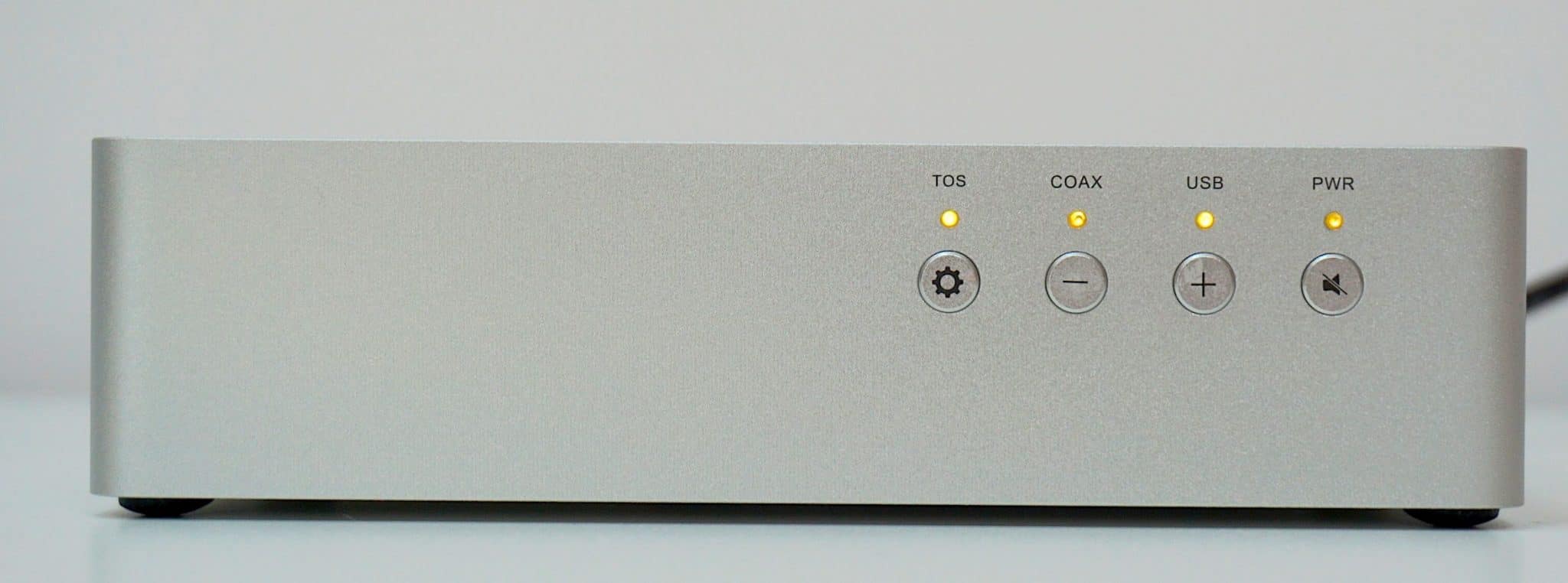
Don’t look towards the manual for help on this. The manual does a great job of displaying seven sets of graphically-based test data. Data which should have stayed in the Lab and has no place within a consumer manual. No, you need to access the company’s website and the unfriendly graphic which offers the solution. Eventually. After some interpretation.
As you can see here, each filter triggers a light – indicated here by the ‘1’. Each filter then presents a unique light pattern. The effect looks like something from a primitive computer. Anyone remember 1974’s Altair 8800 which communicated with you by lights only? Yea, that’s how I felt operating the filters on the LA-QXD1.

And I forgot to tell you what the filters are actually called. Don’t ask Soncoz because they won’t tell you. That includes the company website, its product FAQ and manual. All you get from the company is a series of abbreviations that mean nothing at all. ‘Fam’, anyone? How about ‘Fal’?
For your information APOD = Apodizing fast roll-off filter (this is the switch-on default); BRIC = Brick wall filter; FAM = Minimum phase fast roll-off filter; FAL = Linear phase fast roll-off filter; HYER = Hybrid fast roll-off filter; SLM = Minimum phase slow roll-off filter and SLL = Linear phase slow roll-off filter.
Oh and the light themselves? They’re too bright.
As for the so-called manual? Included information that was in any way useful was sprawled over what, three small pages? We’re not talking about a 300 page manual here. This information could have been squeezed onto a small card and popped into the box. There’s absolutely no reason why this information should be download only. If iFi can include this information on a small, fold-out card in its newly released DAC products and can charge a similar price (or less) then why can’t Soncoz?
There are design issues then. But how does it sound?
SOUND QUALITY
Before I took any overall sound decisions I needed to find a level playing field to work from which meant filtering through the filters and finding the best performing filter for my filtered ears. Once selected, I could then proceed with the rest of the review.
So I hooked up my Audiolab 6000CDT transport, connected the two with a Tellurium Q digital coax and span The Police’s Zenyatta Mondatta and the track Shadow’s in the Rain. I chose a random filter, in this case Minimum Phase Slow Roll Off.
I began comparisons at an extreme and Brick Wall which sounded clinical and bright in the mids with a sharp-edged thwack from the bass and an overall icy response from the soundstage.
I retreated quickly and tried Minimum Phase Fast Roll Off which offered a more open soundstage, not the same nastily aggressive mids but still a rather clinical output from the upper frequencies, especially during vocal crescendos.
Hybrid Fast Roll Off was better. Still edgy in terms of midrange with tizzy treble from cymbals sounding not quite as clinical in overall presentation.
Linear Phase Fast Roll Off extended the space in the midrange but I could still sense listening fatigue approaching from the distance because of those compressed midrange frequencies.
Apodizing Fast Roll Off civilised the lower frequencies a tad, adding a measure of space in the soundstage and minimising the aggressive tendencies of many of the Fast filters listed here but the Minimum Phase Slow Roll Off still sounded the best to my ears.
I finally tried Linear Phase Slow Roll Off but the bass didn’t sound quite as organic as it did on Minimum Phase Slow Roll Off while the mids offered a measure of civilising behaviour with little or no aggression on view. This latter, I found, was the most tonally neutral of them all.
So, that was my chosen filter for the rest of the review.
I then played The Other Way of Stopping from the same album, a high-energy instrumental with a combination of percussive patterns, the potential for pinched lead guitar mids, notable bass and contrasting cymbal work.
I was interested in comparing the LA-QXD1 with the similarly-priced Topping E30 DAC and found the latter a little thin and harsh in its presentation when compared to the Soncoz.
The E30, compared to the LA-QXD1, had a slightly simplistic, rather primitive sound with the lead guitar sounding a little thin and percussion moving away from the neutral and organic. Again I repeat, while the E30 sounded excellent in isolation, when it came to a head to head against the LA-QXD1, the E30 walked away with a bloody nose.
The LA-QXD1, in fact, had a relatively organic, elegant sound presentation offering balance and finesse in the mids with a reverb-laden suite of complex lower frequencies.
While the E30’s bass veered towards the plastic, the LA-QXD1 provided a naturalistic response.
This output was best heard from a jazz outing Bing With a Beat via Bing Crosby and Bob Scobey’s Frisco Jazz Band and the track, Let a Smile be Your Umbrella on the Bluebird label.
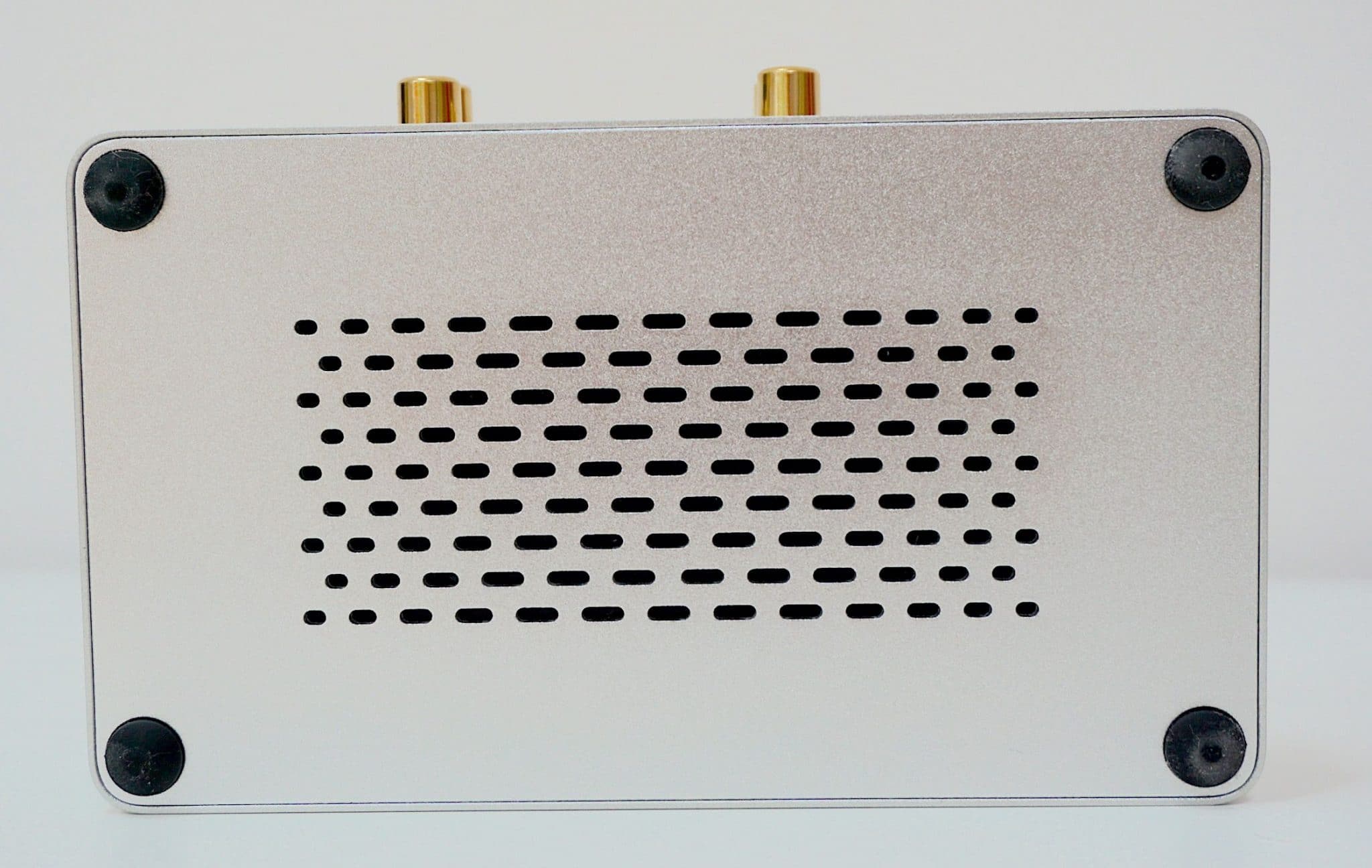
The parping of the brass section, vocal crescendos and the crisp early percussive strikes were all prime for edge and the proverbial lit midrange. Instead, the LA-QXD1 soundstage offered a relatively neutral and balanced play with a honed and detailed percussive backing to a generally smooth brass output and a textured, emotive vocal performance.
That the treble never tizzed or mids barked or bass bloomed was a testament to the performance of this little DAC. The contrast between the trumpet and trombone one one side and the sax on the other was a testament to the tonal transparency from the LA-QXD1.
I then turned to the balanced outs on the LA-QXD1 and compared them to the single-out option. First up, the balanced outs increased the volume so I had to lower the gain to compensate.
Now, just because a product offers a balanced option, that doesn’t automatically mean that the sound will improve. I’ve heard plenty of of hi-fi that fails to implement balanced options properly, resulting in a less than impressive output.
Here, I was happy to hear an enlarging of the soundstage and space infused within which enhanced the naturalistic tonality from the sound. It also increased the amount of detail on view. On the other hand, the midrange was brighter and rather clinical in execution so I again, wondered about the execution of the balanced option here.
Balanced provided a one step forward, two step back approach. That extra space produced a lovely maturity in the mids but those mids did indeed sound like peak limiting had been pushed into the red with the clinical edge proving an issue and driving me back to single-ended mode which is where I stayed for the rest of the review.
I then connected my Astell&Kern AK120 to the LA-QXD1 via optical and played Bob Marley’s Jamming at 24bit/96kHz
First up, make sure you push the optical cable fully home before play. I was left wondering why I couldn’t hear a note until I pushed the cable once more for that final click.
This high-res file sounded smooth despite its inherent, rather compressed nature. Bass was full and rounded with a powerful lower frequency drive while the Marley vocal was both open and expressive. Yes, the treble was a tad tizzy and fizzy but that was the nature of the master. On the whole, the music flowed easily with enough instrumental separation to provide plenty of detail across the soundstage.
I ended by pushing a DSD128 file of Eric Bibb’s Meet Me at the Building via my laptop, connected through USB. Comparing the LA-QXD1 to iFi’s Zen DAC in USB mode, the LA-QXD1 was out-classed when tackling this DSD file. The iFi provided a lower noise output and a sense of polish and style across both percussion and vocals that was naturalistic, balanced and easy on the ear. The LA-QXD1’s slightly higher noise output produced a tense response in comparison which meant that the vocals were not quite as laid back while the accordion didn’t flow quite so easily.
Nevertheless, there was much to like with the LA-QXD1. Partly because of the extra features it offered on the chassis when compared to the iFi but also its general output via DSD remained effective. The LA-QXD1 did a good job in separating out the mass of information, from varied percussion, secondary percussion, acoustic guitar and accordion. While noise might have been higher than the iFi, the LA-QXD1 still offered an informative and entertaining presentation. There was space for detail to roam that gave the ear access to subtle areas of the soundstage.
CONCLUSION
In pure technology terms, the introduction of the latest generation of low cost Chinese DACs are like a breath of fresh air into the budget sector of hi-fi. Treat them as they are presented, though. They provide great sound for the price but they’re not super-hero, giant-killing, wonder technologies. There are better quality DACs out there that will provide quality sound with superior interfaces and support documentation. That said, the Chinese-sourced budget technologies provide great value for money and, most importantly, they have heated up this sector with a swathe of fierce competition.
The LA-QXD1 offers plenty of features that work well at the price. There’s better options if you want a USB DAC and the balanced output was a disappointment while the interface and support options were sub-standard.
Even so, the LA-QXD1 remains a good example of the genre, giving the ear a sense of maturity in the midrange, via single-ended mode, with a naturalistic bass and relatively extended dynamic reach to provide an admirably neutral output for a DAC of this type and price point. Offering plenty of features, retaining a small form factor and price point, the LA-QXD1 offers a great choice for anyone looking to build a digitally-based budget hi-fi.
SONCOZ LA-QXD1 DAC
Price: £152
Website: hifigo.com
TO BUY CLICK HERE:
EUROPE – https://amzn.to/2TSzomN
GOOD: single-ended outputs, relatively neutral, organic bass, smooth mids, form factor
BAD: balanced output option, interface, manual, USB DAC
RATING: 7
[Don’t forget to check out my new Patreon Page at www.patreon.com/audiophileman, for exclusive postings, giveaways and more!]
REFERENCE
Apple MacBook
Astell&Kern AK120 (Red Wine Modded) DAP
Tellurium Q & QED cabling

